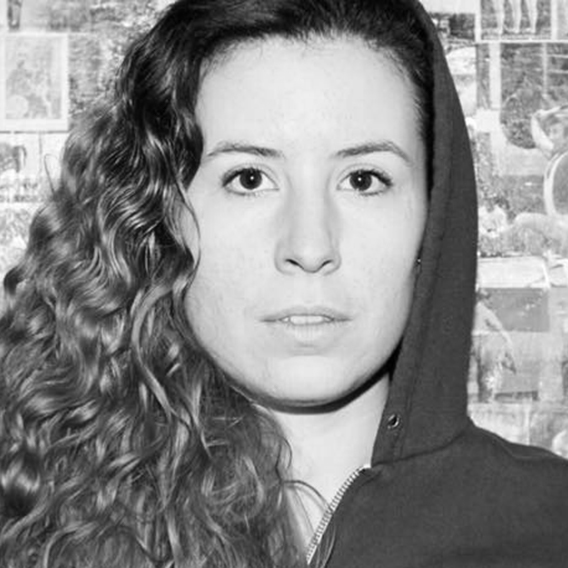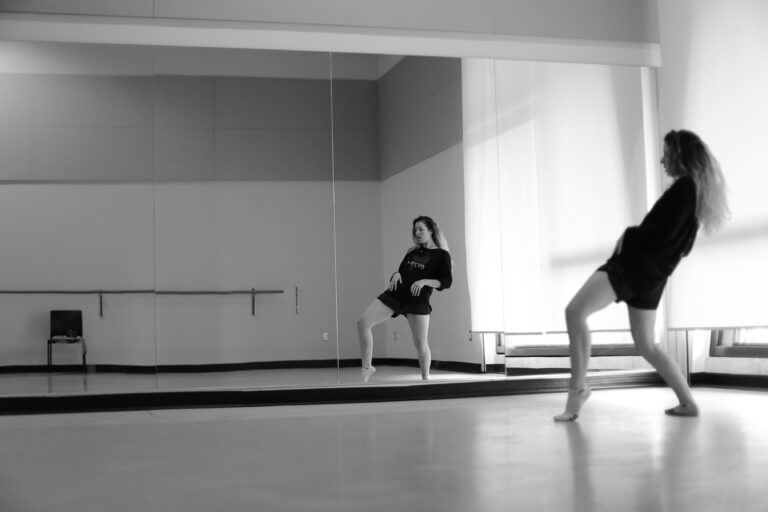The Pursuit of Balance
I’ve been a trained contemporary dancer for over twenty years. I’ve only been a competitive weightlifter for about two. Dancing and weightlifting may seem to have nothing in common, but I’ve found many surprising similarities, parallels, and intersections between the two sports. They both give me things I need.
In the world of weightlifting, there are many different styles and techniques. I fell in love with Olympic-style weightlifting (or OLY, as we call it), which is the one that resembles choreography the most. In OLY competitions, there are two types of lifts: the snatch and the clean and jerk. (Yes, those are hilarious names for lifts. We often make jokes about it.) Unlike powerlifting, which focuses more on brute strength and lifts that require 100 percent effort from the start to the end— squats, deadlifts, and bench pressing—the two lifts practised in OLY require a high level of coordination and dynamics. In the snatch, for example, there are many separate movements that happen in the blink of an eye. The first pull off the floor guiding the bar up, the shoulders and then elbows shrugging to keep it on path, the full extension of the body and the slight lean back—all so that the bar can drive in a straight line from the floor to over the head. Before there’s time to think, you drop into a squat to get under the bar. For a brief millisecond, it floats over your head, almost weightless, and then every muscle in your body tightens as you push your arms up to catch it, and then you fight to stand up with it. The snatch is a full choreography. It’s beautiful.

Photo by Patrick Leung
I love dance and choreography because I’m deeply passionate about storytelling. I believe that telling a narrative through movement allows us, as humans, to connect to stories on a deeper level. Expression through dance and the potential to connect with an audience is my purpose in life. Because dance is created to be shown to an audience, it is consumed and then critiqued based on that audience’s personal opinion or taste. So, whether a choreography or show is a success doesn’t come down to simply if it happened, but if the right people saw it, if those who saw it were touched or moved, if the location of the theatre was accessible, or if there was another show on at the same time that was more popular. It could be any number of factors. This can drive me mad!
The reason I turned to weightlifting is because, unlike dance, lifting is 100 percent objective. The weight goes up or it doesn’t. You lift the bar or you don’t. A successful result is clear. The simple pass-or-fail does amazing things for my mental sanity and my self-confidence. It’s my refuge from the uncertainty and rollercoaster that is dance and choreography.

But the clarity I get from lifting doesn’t come without sacrifices. There are hardships as well. Lifting is an expensive sport. It costs money, money, and more money. Above anything else you need to pay a coach, and then there are membership fees, competition fees, travel, equipment, and the list goes on. I’m looking to compete in the 2017 season, which means starting to save now. The reality of being a dancer and choreographer in Toronto means that a large portion of my income actually comes from working joe jobs. But because lifting takes up a large chunk of time—training up to twenty to twenty-five hours a week—it cuts into the time needed to make money. After a full day of rehearsal, and then weightlifting training, I have to find the time to work, to tuck a little bit of money aside to have enough for the season.
And then there’s my aging body. As any dancer or athlete knows, when you’re coming up on thirty years old, your body doesn’t bounce back like it used to. When stiffness from training used to last a day, it now lasts three. When an injury used to take a week to heal, it now takes a month. It doesn’t matter if I’m dancing or lifting, I need to take better care of my body than I ever did before. Self-care and injury prevention have never been so important.
Dance and weightlifting give me such different benefits and I am passionate to the pursuit of this balance. The intersection of this weird combination of arts and sports has moulded me into what feels like the full expression of myself. I am a better choreographer when I weightlift and a better weightlifter when I dance. Both are sport and both are art. I am humbled by what both have to offer. And I’m dedicated to making it work on a physical and financial level because of what it gives me on an emotional and mental level.










Comments